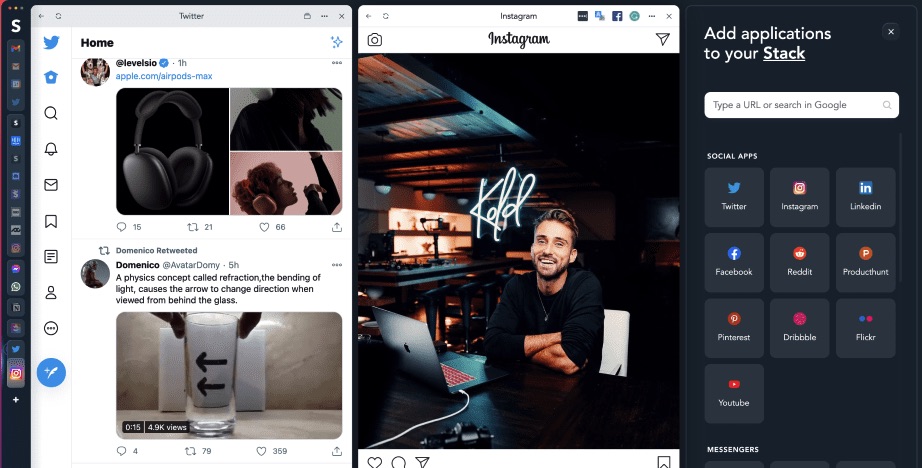Just a handful of names divvy up the browser market. More precisely, if we look at Statcounter’s latest stats, it’s Chrome and other popular Chromium-based browsers – including Edge – that have the lion’s share, followed by Apple’s Safari and Firefox, which has been losing users daily.
But while these browsers have dominated the market for years, their permanence is not a given. Even more so if they fail to renew themselves, in as much as, despite their differences, their design is bound to a common age-old paradigm.
This is not to say that these browsers haven’t changed over the years. They indeed have added new features and adopted new technologies. However, all of them still rely on an old design decision: tabbed browsing.
Originally, tabs came to put a halt to the number of open windows. When piled up, windows proved detrimental to users increasingly interested in using several sites simultaneously. As of today, that same thing has happened to tabs.
To fix the tabs issue, browsers have recently implemented features such as color tags and tab hierarchy. Still, since these features are built on top of their tabbed interface, they’re not as intuitive nor compatible with what has changed over the last years, including:
- Mobile-friendly web design. The UX/UI of websites increasingly focuses on mobile, prioritizing vertical layouts and scrolling. All the while, traditional desktop browsers maintain a fixed proportion for pages that’s too wide for most content.
- Social media. Checking and managing social media requires at-a-glance access to multiple platforms to view and post updates. It is not uncommon to find tools for this task, since most browsers alone can’t do the job.
- Web apps. The browser is meant to work as the platform of an endless number of programs to be used simultaneously.
- Multi-accounting. It has become more and more common to use more than just one account for a web service. Traditional browsers offer limited support for this.
Stack – Smart Browser that offers Game-Changing Experience
“Smart” browsers challenge conventional browsers by favoring how we use the internet today. One of them is Stack Browser, a Chromium-based browser that doesn’t resemble traditional ones at all.
Stack has figured out different solutions for dealing with the issues of web browsing in our era.
Web pages management
Stack solves the tab dilemma by establishing an intuitive and easily customizable hierarchy. Pages organize as cards; cards group into stacks, and stacks into spaces.
Side-by-side web pages
By following this organization method, you won’t have to change between tabs to work with them simultaneously. Instead, you will see them next to each other, using the full size of your screen while taking advantage of the vertical layout of web pages.

Multiple logins
In Stack, each card can act as a separate session for web pages. In other words, you can freely use multiple accounts on the same page and even save your sessions.
These are but a few of Stack’s features made for bringing browsing to this day and age. Try a smart browser today and take a peek into the future.
Disclosure: We might earn commission from qualifying purchases. The commission help keep the rest of my content free, so thank you!



